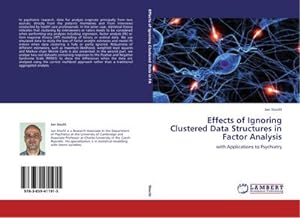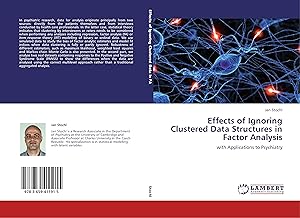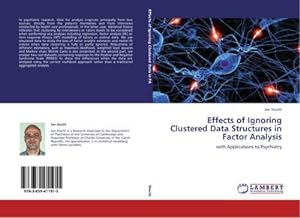effects ignoring clustered data di stochl jan (4 risultati)
Filtri di ricerca
Tipo di articolo
- Tutti i tipi di prodotto
- Libri (4)
- Riviste e Giornali (Nessun altro risultato corrispondente a questo perfezionamento)
- Fumetti (Nessun altro risultato corrispondente a questo perfezionamento)
- Spartiti (Nessun altro risultato corrispondente a questo perfezionamento)
- Arte, Stampe e Poster (Nessun altro risultato corrispondente a questo perfezionamento)
- Fotografie (Nessun altro risultato corrispondente a questo perfezionamento)
- Mappe (Nessun altro risultato corrispondente a questo perfezionamento)
- Manoscritti e Collezionismo cartaceo (Nessun altro risultato corrispondente a questo perfezionamento)
Condizioni Maggiori informazioni
- Nuovo (4)
- Come nuovo, Ottimo o Quasi ottimo (Nessun altro risultato corrispondente a questo perfezionamento)
- Molto buono o Buono (Nessun altro risultato corrispondente a questo perfezionamento)
- Discreto o Mediocre (Nessun altro risultato corrispondente a questo perfezionamento)
- Come descritto (Nessun altro risultato corrispondente a questo perfezionamento)
Legatura
- Tutte
- Rilegato (Nessun altro risultato corrispondente a questo perfezionamento)
- Brossura (4)
Ulteriori caratteristiche
- Prima ed. (Nessun altro risultato corrispondente a questo perfezionamento)
- Copia autograf. (Nessun altro risultato corrispondente a questo perfezionamento)
- Sovracoperta (Nessun altro risultato corrispondente a questo perfezionamento)
- Con foto (4)
- Non Print on Demand (1)
Lingua (1)
Prezzo
- Qualsiasi prezzo
- Inferiore a EUR 20 (Nessun altro risultato corrispondente a questo perfezionamento)
- EUR 20 a EUR 45
- Superiore a EUR 45 (Nessun altro risultato corrispondente a questo perfezionamento)
Spedizione gratuita
- Spedizione gratuita in U.S.A. (Nessun altro risultato corrispondente a questo perfezionamento)
Paese del venditore
Valutazione venditore
-
Effects of Ignoring Clustered Data Structures in Factor Analysis
Editore: LAP LAMBERT Academic Publishing Jun 2013, 2013
ISBN 10: 3659411914 ISBN 13: 9783659411915
Lingua: Inglese
Da: buchversandmimpf2000, Emtmannsberg, BAYE, Germania
EUR 29,90
Convertire valutaEUR 60,00 per la spedizione da Germania a U.S.A.Quantità: 2 disponibili
Aggiungi al carrelloTaschenbuch. Condizione: Neu. Neuware -In psychiatric research, data for analysis originate principally from two sources: directly from the patients themselves and from interviews conducted by health care professionals. In the latter case, statistical theory indicates that clustering by interviewers or raters needs to be considered when performing any analyses including regression, factor analysis (FA) or item response theory (IRT) modelling of binary or ordinal data. We use simulated data to study the bias of factor analytic estimates and model fit indices when data clustering is fully or partly ignored. Robustness of different estimators, such as maximum likelihood, weighted least squares and Markov chain Monte Carlo is also presented. In the second part, we analyse two real datasets containing responses to the Positive and Negative Syndrome Scale (PANSS) to show the differences when the data are analysed using the correct multilevel approach rather than a traditional aggregated analysis.Books on Demand GmbH, Überseering 33, 22297 Hamburg 100 pp. Englisch.
-
Effects of Ignoring Clustered Data Structures in Factor Analysis
Editore: LAP LAMBERT Academic Publishing Jun 2013, 2013
ISBN 10: 3659411914 ISBN 13: 9783659411915
Lingua: Inglese
Da: BuchWeltWeit Ludwig Meier e.K., Bergisch Gladbach, Germania
EUR 29,90
Convertire valutaEUR 23,00 per la spedizione da Germania a U.S.A.Quantità: 2 disponibili
Aggiungi al carrelloTaschenbuch. Condizione: Neu. This item is printed on demand - it takes 3-4 days longer - Neuware -In psychiatric research, data for analysis originate principally from two sources: directly from the patients themselves and from interviews conducted by health care professionals. In the latter case, statistical theory indicates that clustering by interviewers or raters needs to be considered when performing any analyses including regression, factor analysis (FA) or item response theory (IRT) modelling of binary or ordinal data. We use simulated data to study the bias of factor analytic estimates and model fit indices when data clustering is fully or partly ignored. Robustness of different estimators, such as maximum likelihood, weighted least squares and Markov chain Monte Carlo is also presented. In the second part, we analyse two real datasets containing responses to the Positive and Negative Syndrome Scale (PANSS) to show the differences when the data are analysed using the correct multilevel approach rather than a traditional aggregated analysis. 100 pp. Englisch.
-
Effects of Ignoring Clustered Data Structures in Factor Analysis
Editore: LAP LAMBERT Academic Publishing, 2013
ISBN 10: 3659411914 ISBN 13: 9783659411915
Lingua: Inglese
Da: moluna, Greven, Germania
EUR 26,80
Convertire valutaEUR 48,99 per la spedizione da Germania a U.S.A.Quantità: Più di 20 disponibili
Aggiungi al carrelloCondizione: New. Dieser Artikel ist ein Print on Demand Artikel und wird nach Ihrer Bestellung fuer Sie gedruckt. Autor/Autorin: Stochl JanJan Stochl is a Research Associate in the Department of Psychiatry at the University of Cambridge and Associate Professor at Charles University in the Czech Republic. His specialization is in statistical modellingwith laten.
-
Effects of Ignoring Clustered Data Structures in Factor Analysis : with Applications to Psychiatry
Editore: LAP LAMBERT Academic Publishing, 2013
ISBN 10: 3659411914 ISBN 13: 9783659411915
Lingua: Inglese
Da: AHA-BUCH GmbH, Einbeck, Germania
EUR 29,90
Convertire valutaEUR 60,84 per la spedizione da Germania a U.S.A.Quantità: 1 disponibili
Aggiungi al carrelloTaschenbuch. Condizione: Neu. nach der Bestellung gedruckt Neuware - Printed after ordering - In psychiatric research, data for analysis originate principally from two sources: directly from the patients themselves and from interviews conducted by health care professionals. In the latter case, statistical theory indicates that clustering by interviewers or raters needs to be considered when performing any analyses including regression, factor analysis (FA) or item response theory (IRT) modelling of binary or ordinal data. We use simulated data to study the bias of factor analytic estimates and model fit indices when data clustering is fully or partly ignored. Robustness of different estimators, such as maximum likelihood, weighted least squares and Markov chain Monte Carlo is also presented. In the second part, we analyse two real datasets containing responses to the Positive and Negative Syndrome Scale (PANSS) to show the differences when the data are analysed using the correct multilevel approach rather than a traditional aggregated analysis.





